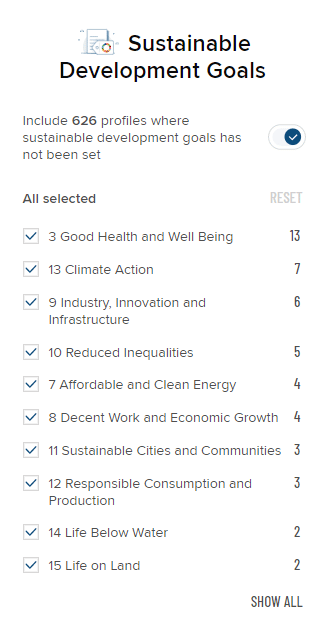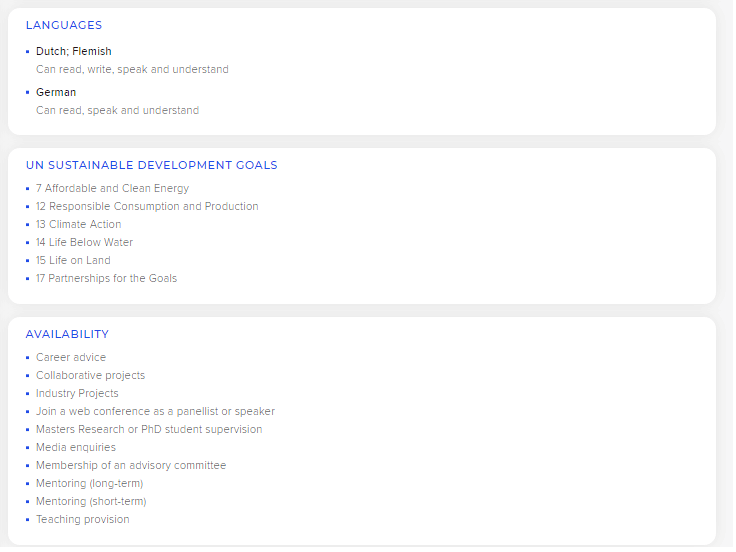For nearly three decades the UN has been bringing together countries from around the globe to hold climate summits on how to address the growing climate crisis. Last year’s Conference of the Parties (COP) in Glasgow (delayed by a year due to the pandemic) took major steps toward addressing the climate crisis, but failed to deliver the national commitments required to together limit warming globally to 1.5C laid out by the Paris Agreement.
After a year of extreme weather events, from record heatwaves to disastrous flooding, this year’s COP27 in Sharm el-Sheikh, Egypt, will be crucial as the world seeks to take steps together toward mitigating and preventing the worst impacts of climate change.
A UN Climate Change ‘Global Innovation Hub’ (UGIH) will be held during COP27, accessible digitally for the first time to enable greater collaboration, and is set to “ratchet up the scale and effectiveness of innovation in tackling climate change and help deliver on the UN’s Sustainable Development Goals”. The UGIH aims to accelerate action across both the Paris Agreement and the 2030 Agenda.
The United Nations’ Sustainable Development Goals (SDGs) are designed to be a blueprint for achieving a better and more sustainable future for all by addressing the global challenges we face. The SDGs are at the centre of the UN’s 2030 Agenda for Sustainable Development and represent an urgent call for action by all countries – both developed and developing – in global partnership. They recognise that ending poverty and other deprivations must go hand-in-hand with strategies that improve health and education, reduce inequality, and spur economic growth – all while tackling climate change and working to preserve our oceans and forests.
Tracking and reporting on SDGs in Elements
Since SDGs were first introduced, there has been a growing vested interest in tracking, analysing and showcasing the ways in which researchers are contributing to achieving these goals, and in demonstrating global research impact at an institutional level. This can be clearly seen in the increasing numbers of institutions participating in the Times Higher Education (THE) Impact Rankings, which in 2022 showed a 23% increase from 2021. THE Impact Rankings are the only global performance tables that assess universities against SDGs, and currently show participation across 110 countries and regions.
This year we introduced simple but powerful functionality into Elements, allowing institutions to track which research outputs, publications, and activities connect back to the 17 SDGs via use of a new label scheme. SDG labels can be applied to any items captured in Elements (eg. publications, grants, professional & teaching activities and records of impact).
Labels can be applied manually, in bulk via the Elements API, or automatically through our Dimensions integration. Dimensions uses machine-learning to automatically analyse publications and grants, and map them to relevant SDGs. Dimensions maps SDG labels to over 12.9 million publications and hundreds of thousands of grants, with more records being analysed and mapped all the time. These labels are now automatically harvested into Elements together with other metadata on Dimensions records. Those who are licensed to use Dimensions as a data source can further exploit the benefit of having SDG labels harvested and applied to records automatically.
Read our Digital Science report on Contextualising Sustainable Development Research.

Once collected, SDG data can be used for powerful reporting purposes, whether at an individual, school, or institutional level. We have introduced stock dashboards to support initial reporting on SDG labels. These tools can help research institutions demonstrate which individuals, schools or groups are focused most on specific SDGs, analyse gaps and areas of further necessary investment, and even demonstrate return on investment for funding.


Labels can also be applied to user profiles and surfaced in public profiles within the Discovery Module add-on to Elements, helping external researchers, members of the press and other stakeholders identify specialists working toward particular sustainability goals (see examples of public profiles showcasing SDG labelling at Oklahoma State University or Lincoln University). This can help drive discoverability of research, open up opportunities for greater collaboration and innovation, and support the public understanding and availability of science by connecting the media to knowledgeable scientific sources.
Users can search and filter by specific SDGs they are interested in to find researchers specialising in that field, while the researchers themselves can showcase their work within their own profiles.

Applying the SDG framework to Elements facilitates and supports both internal and external collaboration and innovation, advancing global efforts to achieve the 2030 Agenda for Sustainable Development.
SDG Case Study: Carnegie Mellon University
Carnegie Mellon University (CMU) is a private, global research university which stands among the world’s most renowned educational institutions. CMU acquired Elements in 2017 and now uses the platform across a wide range of use cases, including “service tracking, faculty annual reviews, publications and monitoring, public directory, custom reporting, data visualization and analysis, data feeds to external websites, open access research and scholarship, data migration from historical systems, researcher identity management, and mapping faculty research to Sustainable Development Goals”. Read more.
During 2021, the University Libraries worked alongside the Provost Office’s Sustainability Initiative to conduct the Sustainable Development Goal mapping with a set of early adopters.
A recent news post on the Carnegie Mellon libraries blog on their ongoing expansion of Elements across campus explains how Director of Sustainability Initiatives Alexandra Hiniker utilised Elements to support faculty in thinking critically about how their work aligns with the 2030 Agenda.
“One thing I’ve heard consistently from students, faculty, staff, and external partners that I work with here in Pittsburgh, across the country, and around the world, is that they want to know what our CMU community is doing on the range of sustainable development goals that cover everything from poverty and hunger, to good health and wellbeing, peaceful, just and strong institutions, reducing inequalities, and of course, climate action,” explains Hiniker in a recent video interview published by the university. “There’s so much great work going on across CMU but it’s hard to pull out all of that information, and share it with all of these different people who are interested in collaboration.
“As part of my role linking students, staff, and faculty across the campus to sustainability efforts, I heard from them that the most important thing was to connect to different parts of the university to which they usually didn’t have access,” Hiniker explained. “Elements is a way for people to quickly access information about what researchers are doing, so that they can help contribute to finding solutions to some of the world’s greatest challenges.”
Elements is now providing a centralized space for CMU’s campus researchers to record which SDGs are associated with their research outputs and other academic activities. The Libraries’ Elements reporting and data visualization team worked with the Sustainability Initiatives Office to build reporting dashboards which surface data on how faculty initiatives and research across campus are supporting specific SDGs.
You can hear more from Hiniker directly in this short interview:
Find out more or get support
Elements can help you track and report on how your researchers are contributing towards the United Nations Sustainable Development Goals as we all work towards achieving a better and more sustainable future for all. Not only does this make participation in the THE Impact Rankings far simpler, it also helps you demonstrate your commitment to global progress to researchers and faculty, prospective students, funders, and other key stakeholders. If you’d like to get in touch to learn more about Elements, or if you’re a current client who’d like more information on how to integrate Dimensions as a data source, or surface SDG labels in public profiles, please get in touch to find out more.
The Digital Science Consultancy team can also produce tailored analysis for non-profits, governments, funders, research institutions and STEM publishers to inform strategy to meet organisational goals. We can help you relate the influence and impact that your organisation has to research on the UN’s Sustainable Development Goals (SDGs).

About the Author
Natalie Guest, Marketing Director | Symplectic
Natalie Guest works in pursuit of the advancement of knowledge by delivering flexible research solutions that help universities, institutions and funding organisations achieve their research goals. She has 10 years’ experience in B2B technology marketing, focusing predominantly on the scholarly publishing, research and information management sector.
The post Demonstrating Real Impact: SDG Reporting for Institutions appeared first on Digital Science.
from Digital Science https://ift.tt/Vj1vMw0


No comments:
Post a Comment